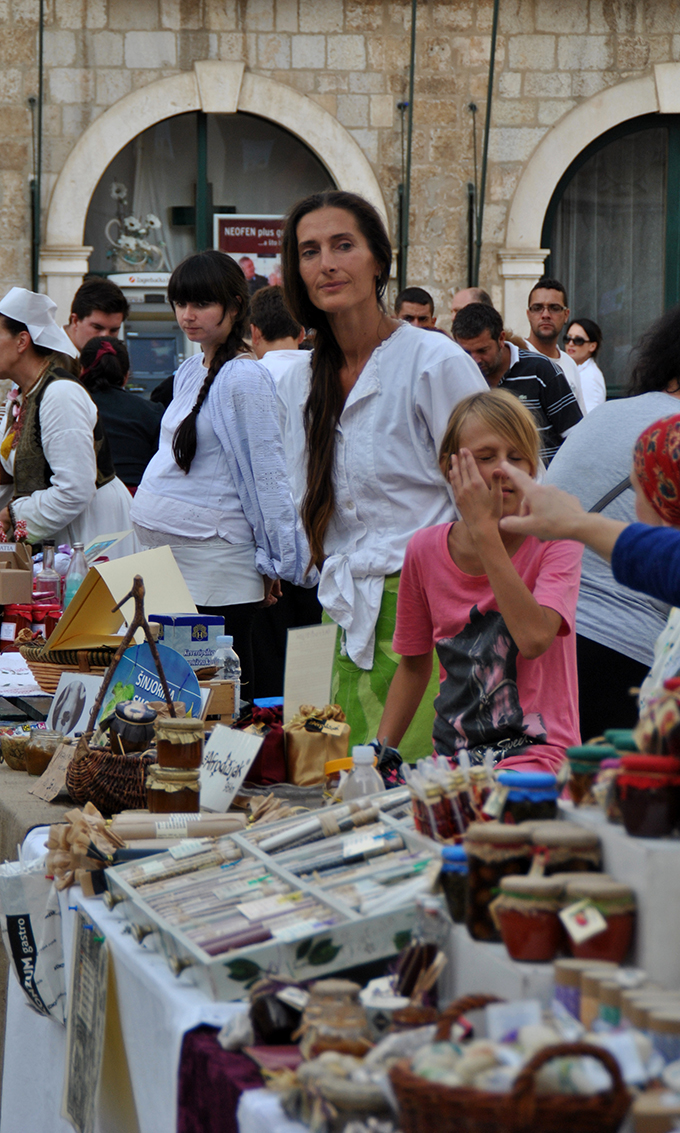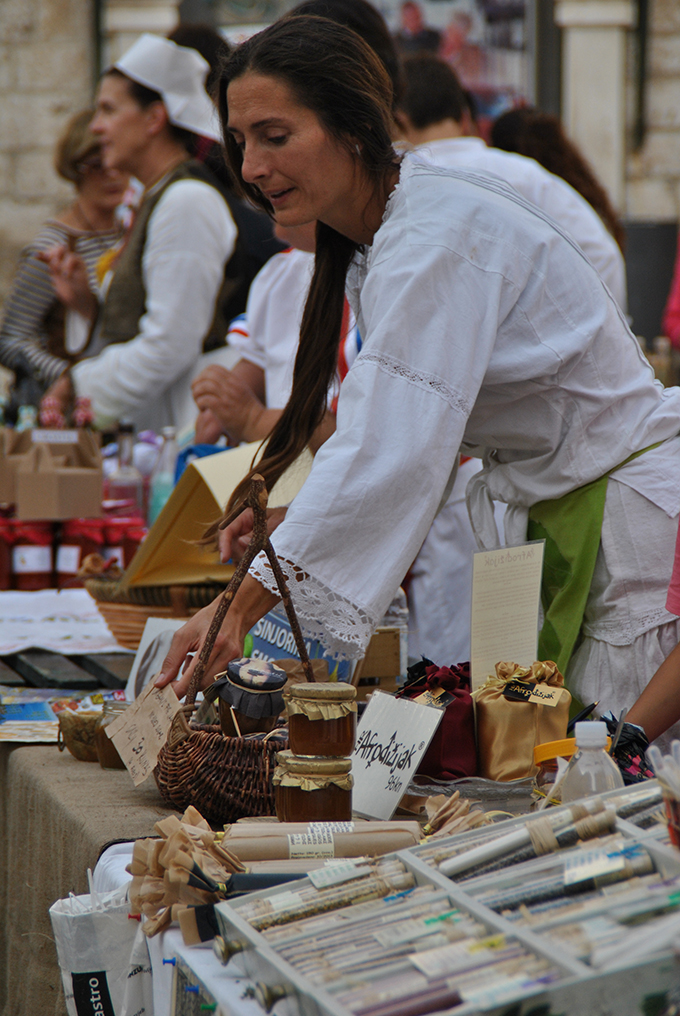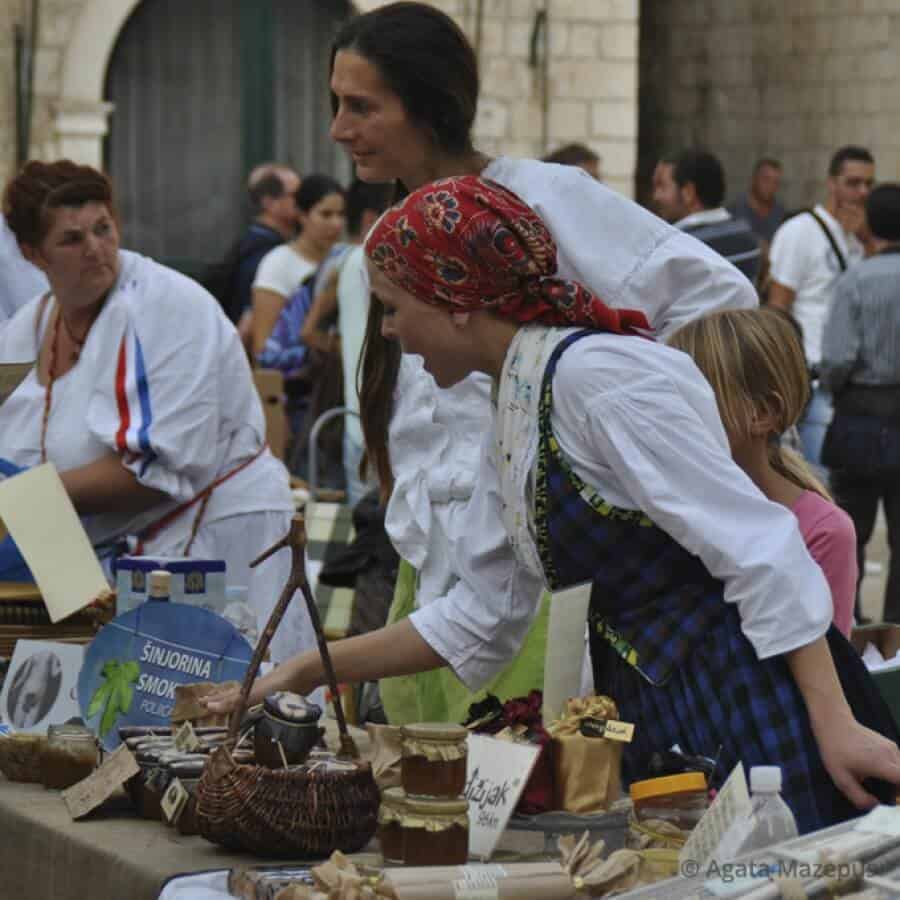Generally, people can be divided in two groups: mountain lovers and sea enthusiasts. But what if I told you that there is a place where you can have both at once? Great, right? And what if I added that at the same time you can enjoy an amazing cultural experience? Welcome to Dalmatia, one of the four historical regions of Croatia.

Beautiful scenery and a wonderful culture
Known for its beautiful beaches, breathtaking mountain views, charming towns, and also known as the place where Game of Thrones and Star Wars were filmed, Dalmatia is above all a region known for the unique culture of its indigeneous peoples. Get to know the heritage of the descendants of the Delmatae people – the ancient inhabitants of one of the most beautiful European regions.
The province of Dalmatia has always had a unique culture as it was isolated from the regions to the north by the coastal mountain range and from the south by the sea. Before the settlement of the Croatian tribe, the region was a Roman province, and therefore Dalmatian language, music, architecture, and lifestyle are a mix of Slavic and Italian influences. Nowadays, Dalmatia and its iconic cities – Split, Zadar, and Dubrovnik – are tourism hot spots. Here are some of the amazing things that make Dalmatia and its culture exceptional.
Jewel of architecture
The Pearl of the Adriatic, Dubrovnik, was described by George Bernard Shaw as a paradise on Earth, and he definitely knew what he was talking about. Dubrovnik was a significant sea power as early as the 13th century. Although the walls of the Old Town were severely damaged during a major earthquake in the 17th century and later on in the 1990s during the Yugoslav wars, Dubrovnik managed to revive. Nearly 56% of its buildings were damaged at the end of the last century, however, thanks to the help of UNESCO, after the end of the war Dubrovnik was rebuilt in a way that preserved its fascinating mix of Romanesque, Gothic, Renaissance, and Baroque styles.
The soul is in the music
But medieval ramparts, beautiful fountains, city gates, and other architectural masterpieces are not the only factors that make the unique atmosphere of the jewel of Dalmatia. When you enter the most famous street of Dubrovnik’s Old Town through its main gate, the first thing you will notice is the Great Onofrio Fountain, where, very often, men dressed in traditional Dalmatian clothing will be playing on a typical musical instrument, the lijerica. The lijerica is a three-stringed instrument which is played with a bow and is played to accompany the traditional linđo dance.
Indeed, music is at the core of Dalmatian culture as the region has a rich and long musical tradition. A curiosity of this musical heritage is klapa – a song performed a capella by a group of five-to-eight men. Klapa was inscribed in 2012 on the Representative List of the Intangible Cultural Heritage of Humanity and the tradition is still alive as new songs are being composed. Also, there are festivals of klapa organized across Dalmatia, with the most important one held in Omiš. Interestingly, in 2013, a group Klapa s mora represented Croatia during the Eurovision Song Contest.
{youtube}FYm4sGd-qP0|600|450{/youtube}
Food to love
History and geography have significantly influenced the cuisine of Dalmatia; and as anybody would expect, seafood is a big factor in the region’s gastronomy. Shrimp, oyster, octopus – Dalmatia has every kind of fish. Peka, for example, is a famous dish made of vegetables and meat (usually lamb) or seafood (octopus). The dish is cooked according to a traditional method known as cripnja where ingredients are roasted in the embers of an open fire.
When it comes to foreign influences, however, many regional dishes were inspired by Italian cuisine with delicious homemade pasta and fresh seafood. For example, black rice with cuttlefish is a trademark of Dalmatian food culture.
On the other hand, in the 19th century Dalmatia was a province of the Austro-Hungarian Empire, and Dalmatian food exhbits many influences from Central European cuisine. This is why palačinke (pancakes) and strudels are very common in the region.
And what goes well with delicious Mediterranean food? Wine, of course. It is amazing that the history of Croatian wine reaches back to ancient Greek settlers, who produced wines on the islands off southern Dalmatia about 2,500 years ago! Check out the wines of the region in a very Croatian way – add some sparkling water to Croatian white wine to get a drink known as gemišt, or combine red wine with still water to get a taste of bevanda.

Just chillax
As I lived for nearly a year in the beautiful city of Dubrovnik, there is one more thing that I learnt about Dalmatian culture that has become an important influence on my life. There is one word that describes the whole philosophy of the people from the region: polako. Polako means “take it easy”. Dalmatians do not worry about unimportant things, they do not rush, and love to relax. Isn’t this an attitude we all would like to take to heart?
Support us!
All your donations will be used to pay the magazine’s journalists and to support the ongoing costs of maintaining the site.
Share this post
Interested in co-operating with us?
We are open to co-operation from writers and businesses alike. You can reach us on our email at [email protected]/[email protected] and we will get back to you as quick as we can.









